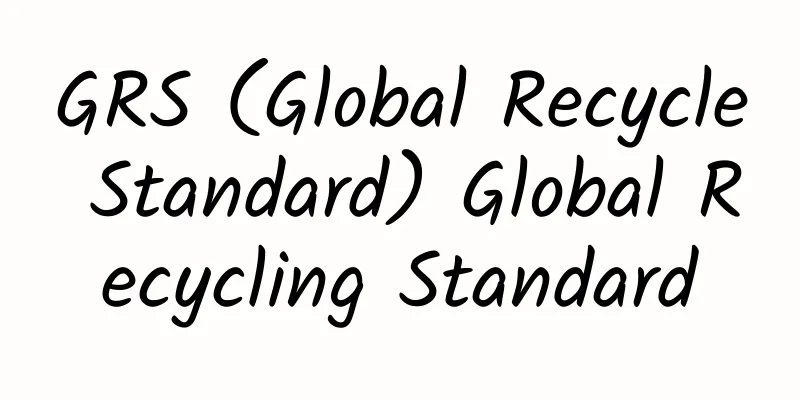Why did Adidas lose?

|
Li Ning has been in an awkward position since 2004. In the past decade, this Chinese sportswear manufacturer has been leading the Chinese sportswear consumer market in terms of market size and appeal. In 2003, Nike became the leader, and the following year, Adidas surpassed Li Ning and ranked second. In the five years since then, Li Ning has been hovering between the two camps formed by Nike, Adidas and the listed companies of Fujian Jinjiang Group, forming its own faction. If it stays in this interval for too long, it will be somewhat embarrassing. On the one hand, the brand and price are going up, but Li Ning cannot escape the gravity of the natural growth of Chinese sports and the sports market; the high-end depends on whether you have a strong brand premium, and the brand premium of sports products is still closely linked to the sports resources (signed athletes and sports teams) held by the company; although Li Ning signed Isinbayeva after the Olympics, Li Ning's main sports resources are still in China, and China does not have an absolute advantage in sports such as football, basketball, tennis and golf that can trigger consumer fashion. Therefore, the sports resources held by Li Ning cannot give Li Ning a brand premium comparable to Nike and Adidas. In a short period of time, it is difficult for the average price of Li Ning's products to catch up with the former two. On the other hand, the market and channels are sinking. The advantage of the Chinese market lies in the population size. Second-tier and third-tier cities and third-tier and fourth-tier cities are gradually showing their consumption power. How to sink the channels to these cities is also a big challenge for Li Ning. Fujian Jinjiang companies, born in second-tier cities, are naturally more familiar with the business in China's second-tier and third-tier cities, and are more adept at using promotional combinations to attract price-sensitive consumers in these cities. The listings in the past three years have allowed companies such as Anta, Xtep, and Peak to use the power of the capital market to speed up the pace of opening stores in second-tier and third-tier cities. Take Anta, which was listed in 2007, for example. In 2009, it had 6,591 stores. From 2007 to 2009, the average annual increase in store openings was 18%, no less than Li Ning. The 2009 annual report gave Li Ning a chance to speak, or to be "spoken of". On March 17, Li Ning released its 2009 performance announcement, with global operating income increasing by 25.4% to 8.387 billion, of which gross profit margin decreased by 0.8 percentage points year-on-year to 47.3%, and operating profit increased by 1.6 percentage points year-on-year to 16%. Two weeks ago, Adidas released its global financial report. The once largest sports brand in the world obviously did not have a good time in the year of the financial crisis. Adidas' full-year turnover decreased by 3.9% year-on-year to 10.381 billion euros. If the exchange rate factor is deducted, it will decrease by 6% year-on-year; operating profit decreased by 52.6% year-on-year to 508 million euros, and the operating profit margin decreased by 5 percentage points to 4.9%; and the profit attributable to shareholders decreased by 61.8% year-on-year to 245 million euros. According to the data in Adidas' financial report, the turnover in Greater China accounted for 9% of the global turnover. Including the exchange rate factor, the turnover in Greater China reached 967 million euros in 2009. Earlier, some media quoted estimates from industry observers that the mainland market accounts for approximately 84% of Adidas' Greater China sales. Based on this calculation, Adidas' sales in the mainland market are approximately 7.3 billion, which is lower than Li Ning's sales (currently approximately 99% of Li Ning's sales are in the mainland market). In other words, after being stuck in the "awkward zone" for five years, Li Ning has moved up. The media began to cheer, as if they were reenacting Mr. Li Ning's "flying" out of gravity at the opening ceremony of the 2008 Olympic Games. But perhaps they should not rush to cheer, but should ponder a more important question: How long can this lead last? What happened to Adidas? To answer this question, we first need to briefly analyze "What happened to Adidas?" In Adidas' annual report, when talking about the market performance in Greater China, the company's CEO Herbert Hainer said: "In the fourth quarter, we continued to work hard to reorganize our channels. Excluding exchange rate factors, this resulted in a 22% year-on-year decline in our performance this quarter." Looking at last year's full-year data, Adidas' Greater China region fell 16% year-on-year. Considering the media reports that Adidas's major distributors in China closed some stores and some small and medium-sized distributors withdrew from the market, it seems that they were affected by the economic crisis. However, considering that Adidas's local competitors in the Chinese market have all recorded an annual growth rate of more than 20%, it is unreasonable to attribute Adidas's performance decline to the bad market environment under the financial crisis. Is it because the price is too high and it cannot capture the consumers who have become price-sensitive after the crisis? According to Herbert Hainer, since Adidas had a problem of excessive inventory in early 2009, the company adopted "extra measures at low profit margins" to digest the inventory. In other words, Adidas should also work hard on promotion in 2009 so that it can provide corresponding promotion resources for channel dealers. Then, the “channel rectification” mentioned by Herbert Hainer is worth paying attention to. In fact, in 2009, Adidas implemented a major organizational change, transforming the original vertical organizational structure into a new cross-functional and cross-brand (Adidas and Reebok) structure, in which the brand and sales functions are separated, and the global sales business is supervised by Herbert Hainer himself. Most importantly, Adidas divided its sales department into "wholesales" and "retail" and established a new team to lead Adidas' retail business, including a "real estate team" responsible for site selection. In its annual report, Adidas explained that since 2002, Adidas has gradually owned 2,212 retail stores (including Adidas and Reebok) around the world. From this perspective, "the company has evolved into a company with considerable retail capabilities", and retail is regarded as a "strategic business" for its future development. From a financial perspective, the gross profit margin of the distribution business in 2009 was 41.6%, while the gross profit margin of the retail business was as high as 58.6%. When Adidas develops its own retail business in a more radical way, the above-mentioned "channel rectification" is imperative. In 2009, Adidas' global distribution business declined by 9%, but its retail business grew by 7% year-on-year; the Chinese market is particularly typical. In 2009, Adidas' distribution business in China declined by 20%, while its retail business soared by 57%, both of which were the highest in the world for Adidas. As the Chinese market has large regional differences and the competition among outlets has not yet entered a stable period, if Adidas continues to promote its global self-operated retail business, this may continue to affect its expansion speed in Greater China. However, in the sports product industry that has long advocated "light asset operation", Adidas's attempt to gradually control the terminal and make the company "heavy" is worthy of attention. Li Ning's Reinvention Compared with its competitors, Li Ning has always had a fairly good and stable gross profit margin, which has basically remained at 47%-48%, which is even higher than Adidas' 45.4% and Nike's 44.8% in 2009, while Anta's gross profit margin was only 42.1%. This shows that Li Ning has strong management and control capabilities and pricing power over the manufacturing process. On the other hand, because the expenditure on advertising and distribution is less than that of first-tier international brands, Li Ning's operating profit margin is higher than that of Nike and Adidas, whose operating profit margins are roughly in the single digit. However, compared with other local competitors, Li Ning's operating profit margin has always been relatively low. In 2009, Li Ning's operating profit margin increased by 1.6 percentage points to 16%, while Anta's operating profit margin was 23%, and China Dongxiang's operating profit margin was as high as 42.7% (China Dongxiang's gross profit margin was 60.4%). Since operating profit is mainly gross profit plus other income, minus sales and distribution costs and administrative costs, this means that Li Ning's "sales and distribution costs" are much higher than those of its competitors. In order to improve distribution efficiency, Li Ning began to reengineer its supply chain in 2007. In 2008, Li Ning Company persuaded several suppliers of shoes and clothing products to move west to Jingmen Industrial Zone in Hubei Province, and attempted to establish a large production capacity base in 2013 that could take on about 50% or even more of Li Ning's orders; at the same time, the Central Logistics Base invested by Li Ning and cooperating with logistics company Baogong will also be built in Jingmen, Hubei. The large-scale westward relocation of production capacity, in addition to considerations of manufacturing scale and cost, is also due to the logistics park under construction. Li Ning Company plans to improve its distribution efficiency through the establishment of this logistics hub, and partially achieve end-to-end delivery from factory to store; the geographical location of Hubei Province also fits Li Ning's plan. Will the concentration of production capacity and the major changes in logistics effectively reduce Li Ning's distribution costs? This depends on whether Li Ning can successfully establish a new supply chain from front-end demand to back-end manufacturing and procurement. However, as Zhang Zhiyong admitted: Li Ning's production line has not yet completed the realization of lean production, and even how the front-end and back-end should fit together is still under consideration. Just like Adidas’ sales reconstruction, it is currently impossible to make a conclusion about Li Ning’s supply chain reconstruction. Therefore, it is too early to determine who will win or lose. Disclaimer: This article only represents the author's personal views and has nothing to do with Phoenix.com. Its originality and the statements and content in the article have not been verified by this website. This website does not make any guarantee or commitment to the authenticity, completeness, and timeliness of this article and all or part of its content and text. Readers are requested to use it for reference only and verify the relevant content by themselves. |
<<: Timberland factory inspection list 1, 2
>>: Coca-Cola launches "Expo City Star" selection in China
Recommend
Pagsmile—Brazil cross-border payments
Pagsmile is a Brazilian cross-border payment plat...
Main features of ISO14001 environmental management system
What are the main features of ISO14001? The ISO14...
What is a clean bill of lading? What is the issuance process of a clean bill of lading?
What is a Clean Bill of Lading? Clean bill of lad...
Poccupine — Borderless Payment Gateway
What is Poccupine? Poccupine is an international ...
Mattel Global Manufacturing Principles - English Version
Mattel, Inc. Global Manufacturing Principles Matt...
Pan-European
Pan-European is a cross-country shipping plan lau...
LI&Fung Company Profile
LI&Fung Company Profile LI&Fung was found...
ACC Processing Plant Wastewater Requirements
The sewage water quality concentration record mus...
bKash--Financial services from Bangladesh
bKash is a mobile financial services company in B...
Characteristics of implementing ISO9000 quality assurance system
The main features of the implementation of ISO900...
REACH - "Registration, Evaluation, Authorization and Restriction of Chemicals"
What is REACH? REACH (REGULATION concerning the R...
Enterprise suppliers applying for ISCC certification need to comply with ISCC declaration requirements
1. In ISCC PLUS, it must be guaranteed that the e...
Common fire safety issues and solutions during BSCI factory audits (VII) Cluttered warehouses with no planned escape routes
Problem phenomenon: The warehouse is messy and th...
inkFrog--ebay management tool
What is inkFrog? inkFrog is a tool that helps sel...
Shanghai Chaowang Anti-Counterfeiting Statement
Dear Customer: Recently, some people have used ou...









